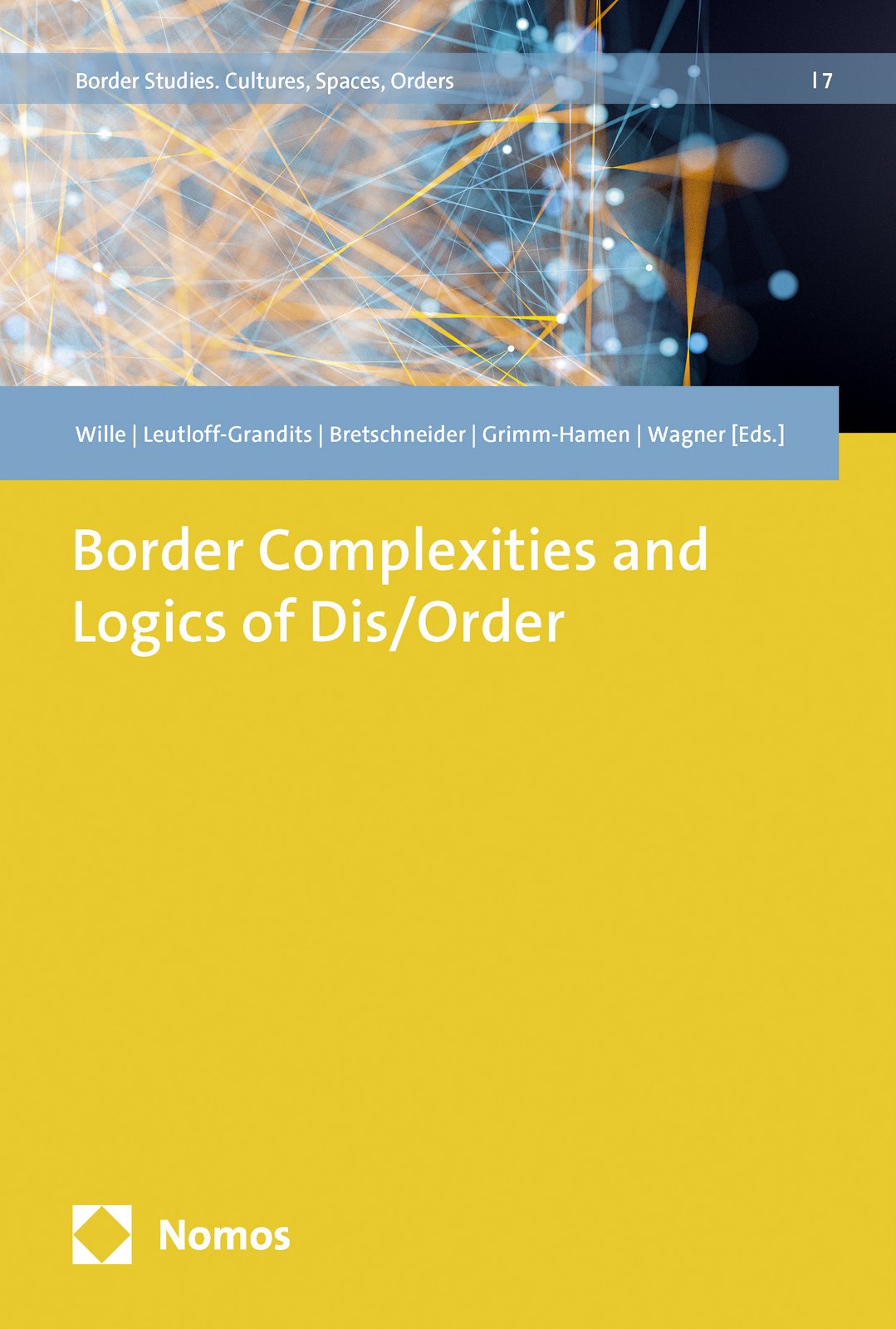New Book – Border Complexities and Logics of Dis/Order
New Book – Border Complexities and Logics of Dis/Order
The interdisciplinary open access anthology, to which five UniGR-CBS members contributed, deals with the still recent trend of considering and investigating borders as complex phenomena. Although this trend began in the 2010s, the relationship between complexity and borders has not yet been explicitly discussed. Instead, the current debate is dominated by a diffuse understanding of complexity and differing views on what is complex about borders.
This is where the anthology starts by defining complexity in more detail, presenting methodological-analytical reflections, and analyzing border complexities in empirical case studies. The 13 authors develop perspectives for complexity-oriented border research and show how borders emerge and function as powerful dis/orders.
Bibliographical information
Wille, Christian / Leutloff-Grandits, Carolin / Bretschneider, Falk / Grimm-Hamen, Sylvie / Wagner, Hedwig (Eds.) (2024): Border Complexities and Logics of Dis/Order. (Border Studies. Cultures, Spaces, Orders, Vol. 7). Baden-Baden, Nomos, DOI: 10.5771/9783748922292.
Authors
Falk Bretschneider, Cécile Chamayou-Kuhn, Ulla Connor, Norbert Cyrus, Astrid M. Fellner, Dominik Gerst, Henk van Houtum, Guillaume Javourez, Rodrigo Bueno Lacy, Daniel Lambach, Carolin Leutloff-Grandits, Islam Rachi and Christian Wille
- Content
-
Dynamics of Dis/Order in Border Complexities
Carolin Leutloff-Grandits and Christian WilleBorder Complexities. Outlines and Perspectives of a Complexity Shift in Border Studies
Christian WilleInsights from Complexity Thinking for Border Studies: The State Border as Emergent Property of International Relations Systems
Norbert CyrusSeeing Like a Complex Border: On the Methodology of Complexity-Oriented Border Research
Dominik GerstSituated Bordering: Developing Border Complexities from a Praxeological Research Perspective
Ulla ConnorContre parallèles et méridiens : Bordertexturing – la complexité de la frontière entre le Canada et les États-Unis
Astrid M. FellnerBorder complexities à l’exemple du roman Der falsche Inder de l’auteur Abbas Khider. Loi, frontières et logiques de « dés-ordre »
Cécile Chamayou-KuhnThe Borders of Banishment. Liminality and Penal Practice in the Early Modern Holy Roman Empire
Falk BretschneiderShifting B/Orders: Europeanization and Cross-Border Practices Between North Macedonia and Greece
Guillaume JavourezEUrope’s Border Dis/Order: The Autoimmunity of a Deadly B/Ordering Regime
Henk van Houtum and Rodrigo Bueno LacyA Land of Wolves: The Rise of Legal Anomie in Administering Expedited Removals of Illegal Aliens in the United States
Islam RachiB/Ordering the State in Cyberspace
Daniel Lambach
- Editor interview
-
Mr. Wille, together with Carolin Leutloff-Grandits and other colleagues, you have edited a book on border complexities and dis/orders. What can readers expect?
In total, we are five researchers from Luxembourg, Germany, and France who are editing this first of two volumes. The anthology is an attempt to consolidate a still young trend in interdisciplinary thinking and analyzing of borders. Readers can, therefore, expect a theoretical-conceptual but also empirical discussion of borders, which we extend into what we call border complexities.
What do you mean by complexity-oriented border studies?
In border studies, it has been said for several years that borders are complex. However, border scholars hardly say what exactly is meant by this and what consequences for research that implies. This is where this volume comes in and counters the inflationary use of the complexity notion with well-founded ideas. On the one hand, we emphasize that borders are not complex structures per se, but that the complexity orientation is a specific and quite promising way of approaching them. On the other hand, we apply the basic principle of the border – to order the world – and link it to complexity thinking. Here, we are guided by the idea that a border is more than the sum of its parts – or, in analytical terms, that a border cannot be explained by its parts, but by the interplay of its parts.
And what does this mean regarding border research?
We build on the progressive trends of current research, which understand borders as powerful structures of discourses, practices, objects, bodies, knowledge, etc. While such elements have tended to be studied in isolation from each other, the complexity perspective emphasizes the interplay of these elements and dimensions. We qualify it complex because it gives rise to dis/orders and thus border(ing)s that are to be considered emergent properties of complex structures. For this special view on borders, we introduce border complexities – a concept that understands borders as relational structures and focuses on the interaction of their elements as well as on the resulting dis/orders and borderings.
That all sounds very abstract. How did you find companions for the book project?
We recommend reading our anthology precisely because it is becoming more and more unusual in academia to provide adequate resources for theoretical and conceptual reflection. It also contains case studies that reconstruct the emergence and effects of dis/orders, for example, in European border regions or in the EU and US migration regimes. We thank the 13 authors for embarking on this book project – some of whom we have been working with since 2019. They were part of the international cooperation project "Border Complexities", in which the idea of this anthology was born. This volume and the one soon to follow present the project results and thus make a substantial contribution to the recent complexity shift in border studies.
The anthology presents the results of the international cooperation project “Border Complexities” (2019-2022), which was funded by the Franco-German University and involved border scholars from Germany, France and Luxembourg.
Contact


